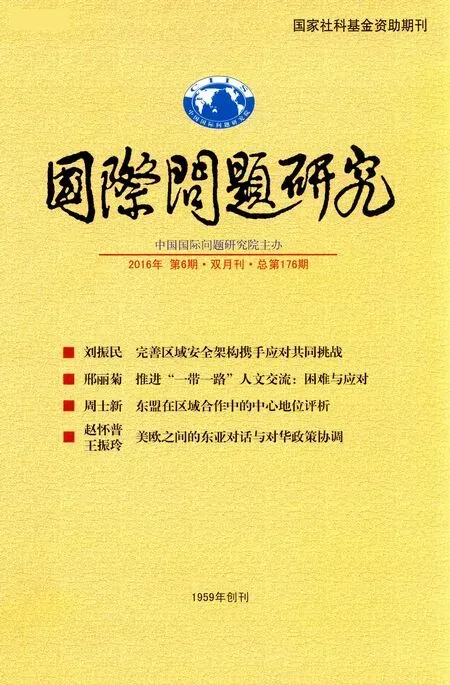Abstracts
Work Together to Improve Regional Security Architecture and Address Common Challenges
Liu Zhenmin
The Asia-Pacific has been peaceful and stable in general and is becoming the most dynamic region with the biggest potential. At the same time, the region faces increasingly complicated security issues, often trans-national, and inter-linked. Traditional hot-spots fl are up from time to time, and non-traditional security challenges are posing severe threats to the security of regional countries and regional stability. As one of the two wheels driving Asia-Pacific cooperation, security cooperation architecture in this region has lagged behind, making it more difficult to deal with growing security challenges in a timely and effective way. This calls for the building of an Asia-Pacific security architecture consistent with regional conditions and the interests of all parties. A new regional security architecture should have the following elements. First, it should be guided by a new security concept. Second, it should be based on the rule of law and international norms. Third, it should be held together by partnerships. Fourth, it should be supported by a comprehensive and multi-layered network. Fifth, it should draw strength from common development.
The Humanistic Exchanges Beneficial to the “Belt and Road Initiative”: Diffi culties and Their Possible Solutions
Xing Liju
The humanistic exchanges can play an important role in driving forward the “Belt and Road Initiative”, contributing to channeling people-to-people communication, building mutual political trust, and deepening economic and trade cooperation. Contemporary challenges confronting the humanistic exchanges in the “Belt and Road Initiative”include religious and cultural differences, political instability, external interferences and the limited capacity of China to conduct exchanges and communication with other countries. In order to guide the humanistic exchanges in the “Belt and Road Initiative”to a smoother course, China should actively call for inter-cultural exchange on the basis of equality, enrich the communication channels for humanistic exchanges, explore a public-private-in-one model in which the civil sphere is allowed to play a greater role,and enhance its capacity of international communication by strengthening its cultural industry. The humanistic exchanges in the “Belt and Road Initiative” is a long process involving piecemeal, gradual mutual adjustment, which cannot be achieved in an impetuous manner.
Analyses of ASEAN Centrality in Regional Cooperation
Zhou Shixin
ASEAN centrality in regional cooperation is evolving and formed in the regional architecture where its member states keep close contacts and cooperation with other countries, reflecting ASEAN’s strategic tendency in safeguarding its own interests and promoting regional peace and prosperity. ASEAN centrality is mainly manifested in its outstanding performances in political security and economic fields, and the actual effects thereof. The comparative advantages of ASEAN in promoting regional cooperation with its dialogue partners are conducive to maintaining and protecting the legitimacy of its centrality. However, due to the limits or defects of its institutional mechanisms, comprehensive strength, functional capacity and political will, ASEAN centrality still faces many difficult challenges, which restrain its active role in promoting regional cooperation. China supports ASEAN centrality and coordinating role, taking into account its interests and concerns in bilateral relations, and expects ASEAN to enhance momentum in promoting regional cooperation.
US-EU Dialogue on East Asia and Coordination on Their China Policies
Zhao Huaipu & Wang Zhenling
The transatlantic dialogue on East Asia is mainly targeted at topics related to the rise of China. The launch of the dialogue mechanism in the early 21st century signifies that the US and the EU’s strategies on East Asia and their China policy coordination in light of the rise of China were offi cially incorporated into the transatlantic agenda. Since the international fi nancial crisis in 2008, the transatlantic dialogue has deepened, with wider scope of topics and more comprehensive discussions. Both sides have raised more targeted and operable suggestions on the coordination mechanism and contents of such fi elds as security, economy and trade, which to some extent promoted the US and the EU’s strategies on East Asia and their China policy coordination. However, contradictions and divergences also remain in the US-EU dialogue. Their different strategies towards China and divergent interests in East Asia limit the depth of their interactions.

